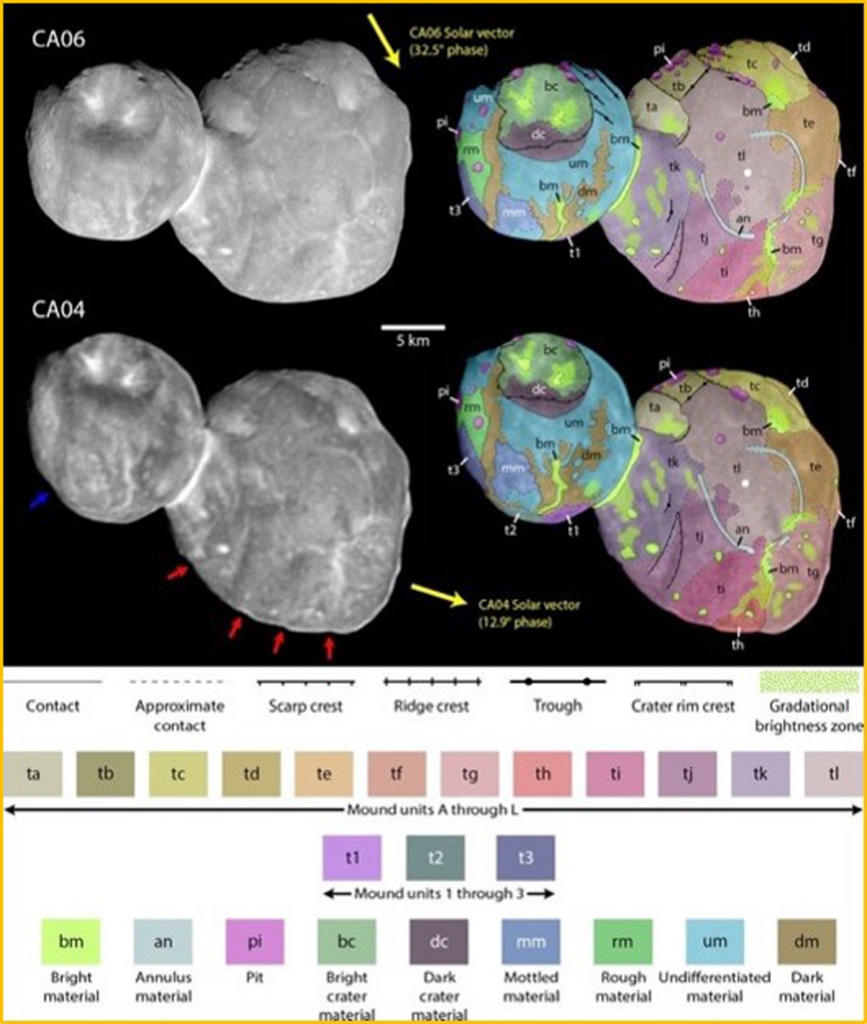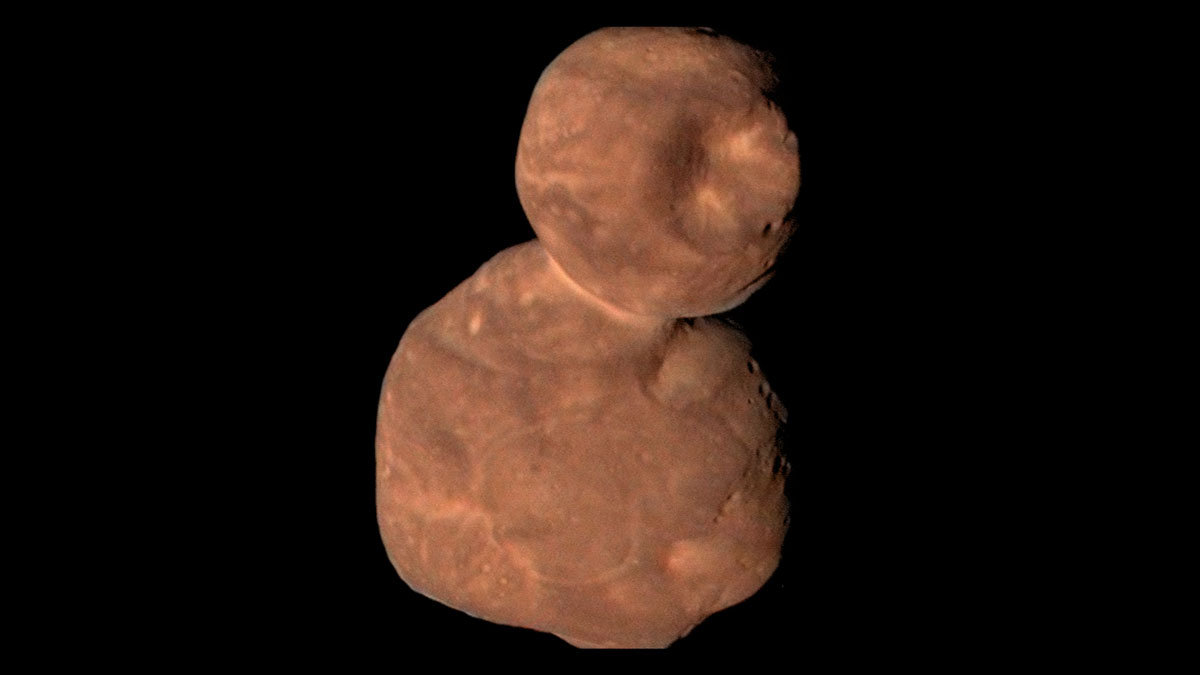Located in the Kuiper belt more than 6.6 billion kilometers from Earth, Arrokoth is the farthest object ever visited by a spacecraft. Astronomers think this flattened, peanut-shaped rock is a planetesimal—a body of coalesced pebbles and dust that forms the building blocks of planets. But a series of roundish mounds on Arrokoth’s two lobes has puzzled scientists since NASA’s New Horizons spacecraft spotted them as it flew by in January 2019. Now, data from that mission show that the mounds likely formed as separate objects that later merged.
Astronomers think Arrokoth got its unique double-lobe shape when two objects orbited increasingly close to one another until they gently met. The body’s smooth surface, almost devoid of craters, is radically different from that of crater-covered asteroids.
As a planetesimal, Arrokoth likely would have formed when a massive cloud of pebbles and dust collapsed under its own gravity in a process known as streaming instability. But why it has mounds resembling the surface of a raspberry was still an unknown.
To get at this mystery, researchers looked at every measurable aspect of Arrokoth observed during the New Horizons flyby, including the mounds’ color, reflectivity, albedo, and reflectance, to produce detailed geological maps of the object’s surface.

The maps revealed a dozen 5-kilometer-diameter interlocking mounds in the larger lobe and three more in the smaller one. Evidence for additional mounds in the smaller lobe was likely destroyed by an impact.
“I find it amazing that this was just a quick flyby, and they are still analyzing and finding more out of this data,” said astrophysicist Hubert Klahr from the Max Planck Institute for Astronomy in Germany, who wasn’t involved in the study. The researchers “do a very careful job with the mapping—it’s just astonishing,” he said.
The mounds are almost identical but are still distinguishable, suggesting they have a common origin, said New Horizons’ principal investigator Alan Stern, who presented the findings at the American Astronomical Society’s 55th Annual Meeting of the Division for Planetary Sciences in San Antonio and in a paper published in the Planetary Science Journal.
The observations suggested that there must be an intermediate stage in the streaming instability process that produces these similar units, which then coalesce to form the larger lobes in a raspberry-like fashion, according to Stern and his colleagues.
A Preferred Size
Some scientists are intrigued by the results but don’t see how the streaming instability process could yield so many small bodies that merge to form a larger one. “Such small progenitors have not yet been seen in streaming instability simulations,” said astrophysicist and planetary scientist Anders Johansen of Lund University, who wasn’t involved in the study. But these simulations, Anders explained, are still very primitive, lacking details about the sticking and fragmentation of the pebbles during the collapse and about the angular momentum of the pebble cloud, which determines the outcome in terms of number of planetesimals.
“Maybe we are still missing something.”
“Maybe we are still missing something,” Johansen said.
Klahr, however, said that some of his latest cloud collapse simulations show that in the Kuiper belt, gravitational collapse could produce hundreds of objects that could then aggregate to form objects such as Arrokoth. The simulations tend to result in a few larger objects that absorb most of the available mass, but many 5- and 10-kilometer-diameter objects also appear. “They also form and they also accumulate into bigger things,” Klahr said.
The New Horizons observations could help better calibrate these simulations, Klahr said. Researchers can now play with the initial conditions in the simulations to fit the observed result.
To improve simulations, researchers need more observations and better data. “We need to get good statistics, then we can make good models,” Klahr said. “The importance is obvious, one needs these planetesimals—without them you will never have a planetary system.”
Future missions should be on alert for patches of similar structures on other bodies, Stern said. He pointed to NASA’s Lucy mission, currently en route to Jupiter’s Trojan asteroids, a mix of objects captured by the giant planet’s immense gravity. “We are going to be on the lookout for this,” said Stern, who is on the Lucy team.
—Javier Barbuzano (@javibarbuzano), Science Writer

